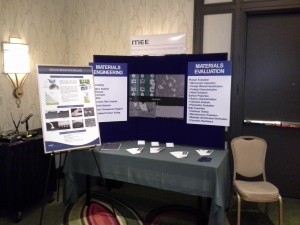Materials Characterization Seminar
posted February 2018Senior Scientist, Dieter Scholz and Materials Engineer, Neal Hanke will be speaking at the Minnesota chapter of ASM 2018 seminar in Brooklyn Park, MN on February 28. The Materials Characterization Seminar is an opportunity to learn about the most recent developments in advanced characterization techniques and their practical applications.
Dieter will be speaking on Broad Beam Ion Milling in Sample Preparation and Neal’s presentation is on the Determination of Nitinol Transformation Temperatures by the Bend and Free Recovery Method.
Filed under: ASM, Broad beam ion milling, Materials Characterization, Materials Science Engineers, Nitinol,






